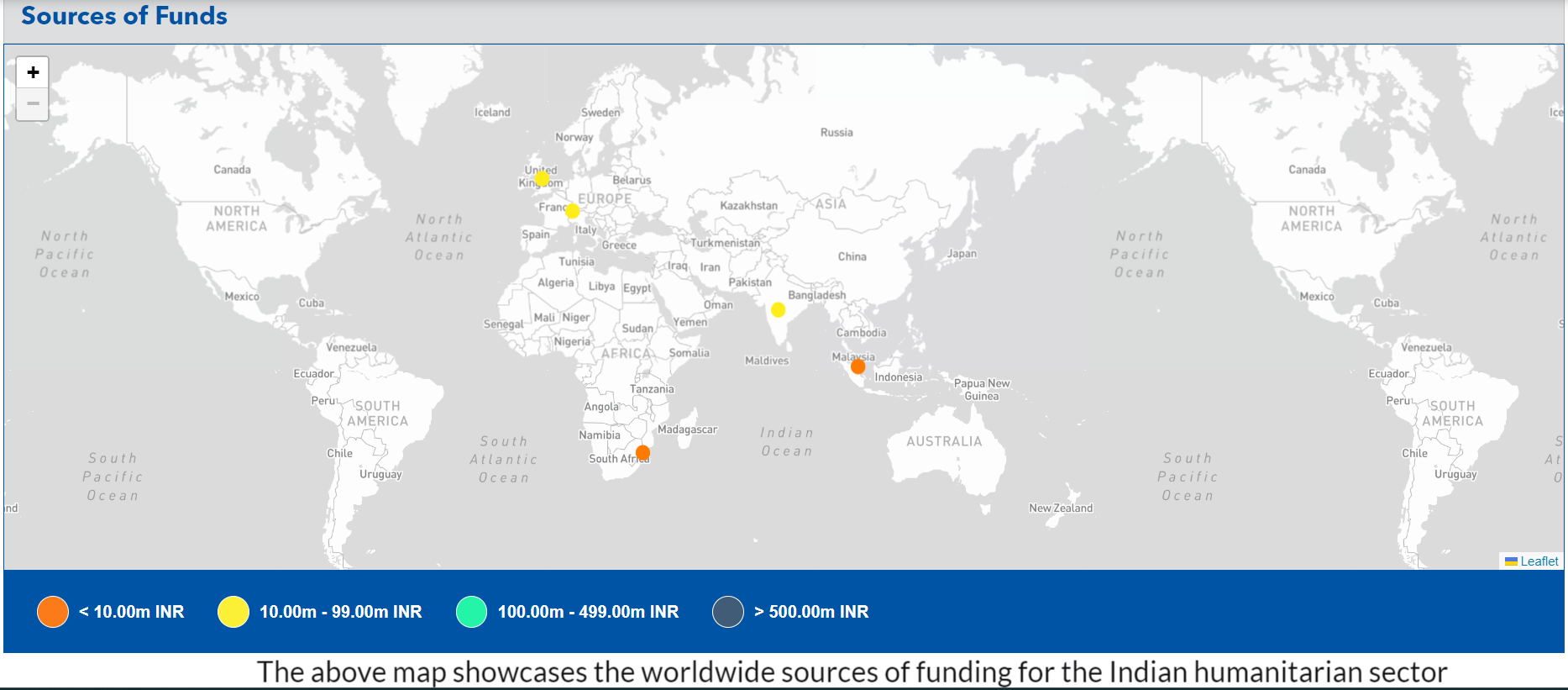
By Anoushka Wanchoo, Humanitarian Aid International, New Delhi, India
1. What is the Dashboard for Aid Transparency and Accountability (DATA)?
DATA, an acronym for “Dashboard for Aid Transparency and Accountability,” is a user-friendly platform tailored for NGOs operating in India and donors worldwide contributing funds within the country. Its core objective is to bolster the financial transparency of humanitarian funding in India and meticulously track the allocation of funds to grassroots organisations. By providing NGOs with a platform to proactively showcase their accountability to the communities they serve, DATA fosters transparency in the aid sector. It offers comprehensive information on humanitarian funding from inception to utilisation, promoting greater participation, instilling donor confidence in recipient organisations, highlighting active organisations, and facilitating enhanced coordination among donors and stakeholders.
2. Why it matters to India?
Currently, there exist two prominent international platforms, namely the Financial Tracking Service (FTS) overseen by UN OCHA and the International Aid Transparency Initiative (IATI). While these platforms primarily focus on capturing global-level funding, the Dashboard for Aid Transparency and Accountability (DATA) introduces additional features tailored to enhance relevance for country-level reporting and tracking, particularly in the context of humanitarian responses in India. DATA offers simplified reporting templates, ensuring that even smaller organisations can easily report their financial data. Moreover, it includes specific data fields to capture both domestic and international humanitarian funding flowing into India. Furthermore, DATA meticulously tracks the utilisation pattern of funds until they reach the affected communities, providing insights into the effectiveness of aid delivery. Additionally, it captures data on funding passed on to local or national organisations, thereby fostering transparency and accountability throughout the aid distribution process.
3. What is data important in humanitarian action?

4. And how will it strengthen response?
5. What data can be shared with or via social media?
On the platform, users can access comprehensive data regarding funds mobilised and their allocation, categorised by financial year. It provides information on top donors, top recipient organisations, and their respective categories. Additionally, users can see which areas are heavily funded and which disasters are underfunded, enabling informed decision-making and resource allocation.
Furthermore, the platform displays critical data on operating and HR costs, essential for understanding the overhead costs associated with the response. Users can also access information on the funding gap and the duration it takes for organisations to collect funds and initiate a response. This data enables stakeholders to understand the challenges in resource mobilisation and response initiation, facilitating efforts to reduce the gap in funding and response time. By identifying bottlenecks and implementing strategies to expedite fundraising and response activities, the platform aims to enhance efficiency and effectiveness in addressing humanitarian needs.
Furthermore, to facilitate in-depth analysis and reporting, users have the option to download a detailed CSV file. This file enables the users to expand their analysis, conduct further research, and generate custom reports tailored to their specific needs and requirements.
By offering this functionality, the platform empowers users with robust data tools, fostering transparency, accountability, and informed decision-making in the management of financial resources.
6. What are the limitations?
Misinterpretation: Publicly available aid data may be misunderstood or misinterpreted by various stakeholders, leading to inaccurate conclusions or perceptions about the effectiveness or impact of aid programmes.
Data Incompleteness: Aid data may be incomplete or fragmented, lacking comprehensive coverage of all aid activities or omitting certain critical information, thereby limiting the usefulness and reliability of the data for analysis and decision-making.
Privacy and Confidentiality: Publishing aid data may raise privacy and confidentiality concerns, particularly regarding sensitive information about individuals or vulnerable populations, necessitating careful handling and protection of such data to prevent unauthorised access or misuse.
Capacity Constraints: Limited institutional capacity and technical expertise among aid organisations, governments, or local partners may hinder their ability to collect, manage, analyse, and report aid data effectively, impeding transparency and accountability efforts.
7. What are the challenges and risks in making aid data public? Risk to the affected population? Risk to NGOs? Risks to authorities?
8. What are your plans to make government data public?
The data reporting on our platform is absolutely voluntary. We are not planning to publish data on behalf of the Government. Instead, we are approaching different SDMAs, NDMA and NIDM, to inform them about the existence of this portal. We are optimistic, that eventually, they will accept its usefulness and start reporting data. We hold a positive outlook that as these entities recognize the utility and benefits of our platform, they will willingly choose to participate and report relevant data. Through ongoing dialogue and collaboration, we seek to cultivate a culture of transparency, accountability, and effective data-sharing practices in disaster management. By empowering all stakeholders with access to timely and accurate information, we aim to collectively strengthen our disaster preparedness and response capabilities.
Disclaimer: The views expressed in this piece are those of the author/s and do not necessarily reflect the views or policies of AIDMI.